I recently visited Road America in Elkhart Lake, WI to watch a race. Between races, I was able to go out on the race track as a passenger in a ZR1 Corvette. The speed and power of the Corvette was awesome. The four mile long race track was beautiful and thrilling.
As we headed down the back straight away, I asked the driver how fast we were going. His answer was 135 mph! He also told me, as we approached turn five, that this is the part of the racetrack where most cars go off the track. At that instant, it dawned on me how important tires are.
Think about it. Driving is one of the most dangerous things we do in our lives. We rely on four tires with a contact patch the size of our hands to keep us travelling down the road safely. So keeping our tires in good shape is important!
Here are some tips to help you do that:
1. Check your tire pressure monthly. Tires can lose approximately one pound per square inch of air (PSI) per month. A tire can lose even more in cold weather climates. So if you rely on your mechanic to check your tire pressure only at oil changes or tire rotations, you could be putting you and your family at risk.
According to the National Highway Traffic Safety Administration, the leading cause of tire-related crashes is under inflated tires. Underinflated tires decrease vehicle handling and gas mileage, and can lead to premature tread wear and a catastrophic blowout. Tires are expensive, but by checking your tire pressure regularly, you can extend their life. To find the appropriate tire pressures for your car, check your owner’s manual or the placard on your car’s door frame.
To learn more about the affects of over-and under-inflated tires, click on the video.
2. Inspect tires regularly, especially before long road trips. At the time you’re checking tire pressure or washing your car, do a physical inspection of your tires.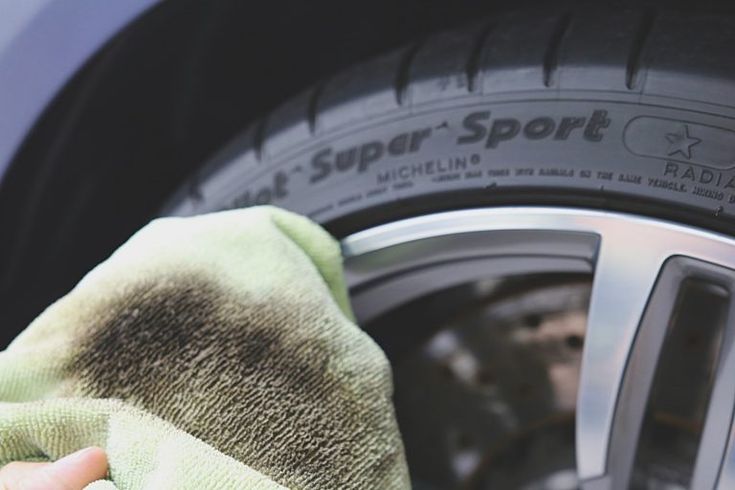 Don’t be afraid to get down on your hands and knees to do your inspection. Things to look for include cracks, bulges, and objects that may have punctured the tire, such as nails, screws, glass, or stones. If one of these objects punctures the sidewall of your tire, your tire will need to be replaced.
Don’t be afraid to get down on your hands and knees to do your inspection. Things to look for include cracks, bulges, and objects that may have punctured the tire, such as nails, screws, glass, or stones. If one of these objects punctures the sidewall of your tire, your tire will need to be replaced.
If you’re going on a long road trip, check your tire pressure and inspect your tires before you leave home. It’s much easier to inspect your tires in the safety and comfort of your own garage or driveway than on the side of the freeway with cars zipping by at 65mph or faster.
If you do experience a tire failure while traveling, consider calling a tire professional in that area to help you change or replace your tire.
3. Rotate, rotate, rotate. In order to maintain even tread wear and to get the maximum life out of your tires, it’s recommended that you rotate your tires every 6,000 to 8,000 miles. If you buy a set of tires from your local tire store, they may provide free tire rotation. If they don’t, tire rotations are fairly inexpensive.
If they don’t, tire rotations are fairly inexpensive.
4. Don’t overload your vehicle. Located on the placard on your door frame is information on how much weight your vehicle can safely handle. Overloading a vehicle can also cause tire failure.
When I was in high school, I overloaded my parents’ Cutlass Supreme station wagon. While the tires didn’t blow, the way the car handled was definitely affected.
5. Don’t wait until your tires are on their death bed to replace. Back in my early married life, I drove my car around with the steel radials coming through the tire; yes, even on the highway.
Tires are expensive and not particularly fun to buy; however, driving on your tires past their useful life puts you and your family in danger.
Most tires have a wear bar between the treads of the tire. If the tire tread depth is at or below this bar, it’s time for new tires. Another trick I learned is to use a penny to check tread wear.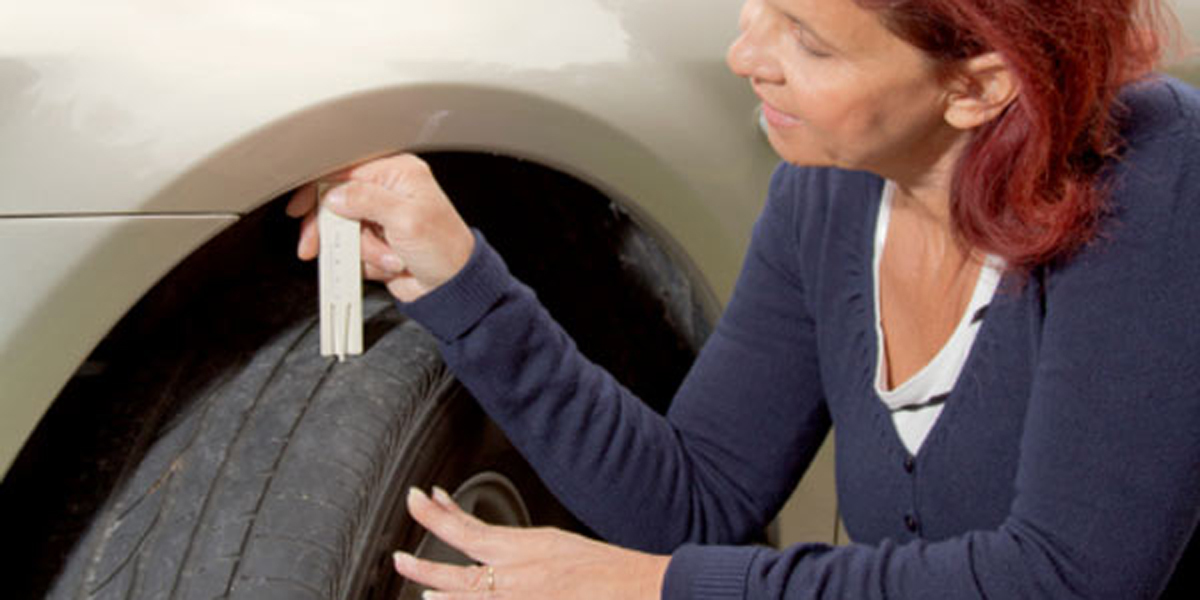 Turn the penny upside down so Abraham Lincoln’s head is between the tread. If you can see the top of Honest Abe’s head, then it’s time for new tires.
Turn the penny upside down so Abraham Lincoln’s head is between the tread. If you can see the top of Honest Abe’s head, then it’s time for new tires.
6. Don’t install mismatched tires. My wife recently bought one new tire for her all-wheel drive car after a screw punctured the tire’s sidewall. After doing some research, I learned that having mismatched tires can negatively impact the handling of your car and cause unusual wear and tear on the rest of your tires, as well as other components of your car. Since her other tires needed to be replaced as well, I bought three more tires a week later.
I learned that the rule of thumb for buying tires is that you should always buy at least two and put them on the rear of the car no matter what type of car you own. While I was taught you should always put new tires on the front of the car, the benefit of putting the new tires on the rear is better handling under wet conditions. If there are poor tires on the rear of your car, it could cause a spin-out.
Do you have any tips or information on tires you’d like to share? I’d love to hear them; please share them in the box below.
If you’re a content writer and would like to contribute to our blog, click here to read our guidelines.
Tires September 16, 2019
Tires, like any car component, need proper care to perform and last as designed. Your tires are especially vulnerable to wear and tear because they are the only part of your vehicle that is in contact with the road.
The good news? Proper tire maintenance is quite simple. Make sure you check these items off your tire care to-do list to maximize their lifespan.
Regularly rotating your tires is an important part of tire maintenance. During rotation, technicians remove each wheel and place it in a different location on the vehicle to ensure even tire tread wear.
It’s important to follow the tire rotation schedule in your owner’s manual. Most vehicles should get a tire rotation every 5,000–7,000 miles or every other oil change.
Most vehicles should get a tire rotation every 5,000–7,000 miles or every other oil change.
An experienced tire professional should inspect the condition of each tire during a rotation. Catching and correcting the cause(s) of uneven tire wear early can prevent your tires from wearing out too soon. Accelerated tire wear is not only expensive, but it can also be dangerous.
Read: Tire Rotation: How It Works & Why It Matters
Another important part of tire maintenance is a monthly air pressure check. For the most accurate results, use a good tire pressure gauge to check the air pressure in the morning before you have driven the vehicle. (You can find your vehicle’s recommended tire pressure in your owner’s manual or on a sticker typically mounted on the driver-side door.)
Under-inflated tires decrease your vehicle’s fuel efficiency, reduce the life of your tires and create a risk of a dangerous blowout. Fortunately, all vehicles made since 2007 come with Tire Pressure Monitoring Systems (TPMS).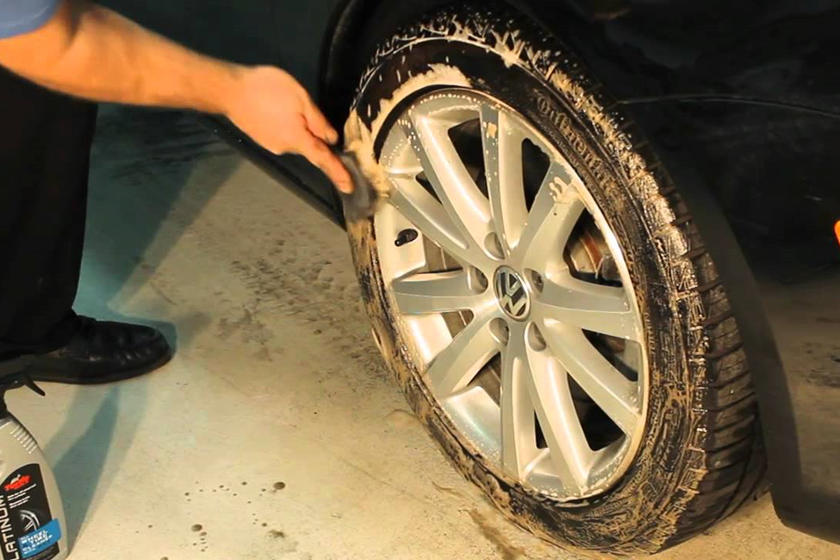 If your vehicle is equipped with TPMS, make sure your regular service facility has the training and equipment to service it correctly.
If your vehicle is equipped with TPMS, make sure your regular service facility has the training and equipment to service it correctly.
At Virginia Tire & Auto, we are always evolving to accommodate changing technology. Our service technicians go through regular training to stay up-to-date on industry standards, and our shops are equipped to handle any TPMS service.
Your tire tread enables your vehicle to grip the road and maintain control. If the grooves in the tire have worn down, your vehicle won’t grip the road effectively. To test the tread of your tires, use the “Quarter Test”:
Read: How Tire Tread Depth Affects Stopping Distance
Even with good care, flat tires happen.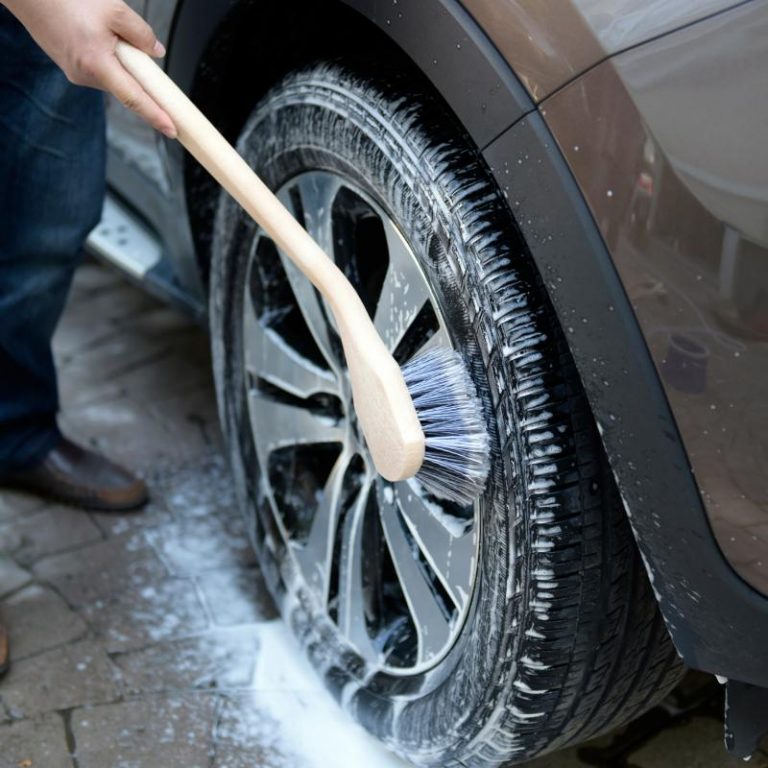 Drivers need to know that there is only one way to properly repair a flat tire. Improperly repaired tires can cause blowouts, serious accidents and fatal injuries.
Drivers need to know that there is only one way to properly repair a flat tire. Improperly repaired tires can cause blowouts, serious accidents and fatal injuries.
In the past, many auto maintenance providers repaired tires with string or fabric-based plugs. Alarmingly, some still do so today. Plugging a tire only costs $10-$15 and takes 10 minutes. This might seem great to a car owner looking to save time or money. But if consumers knew the risks involved, most would see that it’s not worth the risk.
The Correct Way to Repair a Tire
The U.S. Tire Manufacturers Association is clear about the proper method for tire repairs. A trained, qualified technician should inspect the tire inside and out. If the tire is able to be repaired, it should be patched and plugged from the inside-out, as opposed to simply plugged from the outside-in.
A proper tire repair will take about 30 minutes and cost $20-$30. If a tire cannot be safely repaired, you should replace it.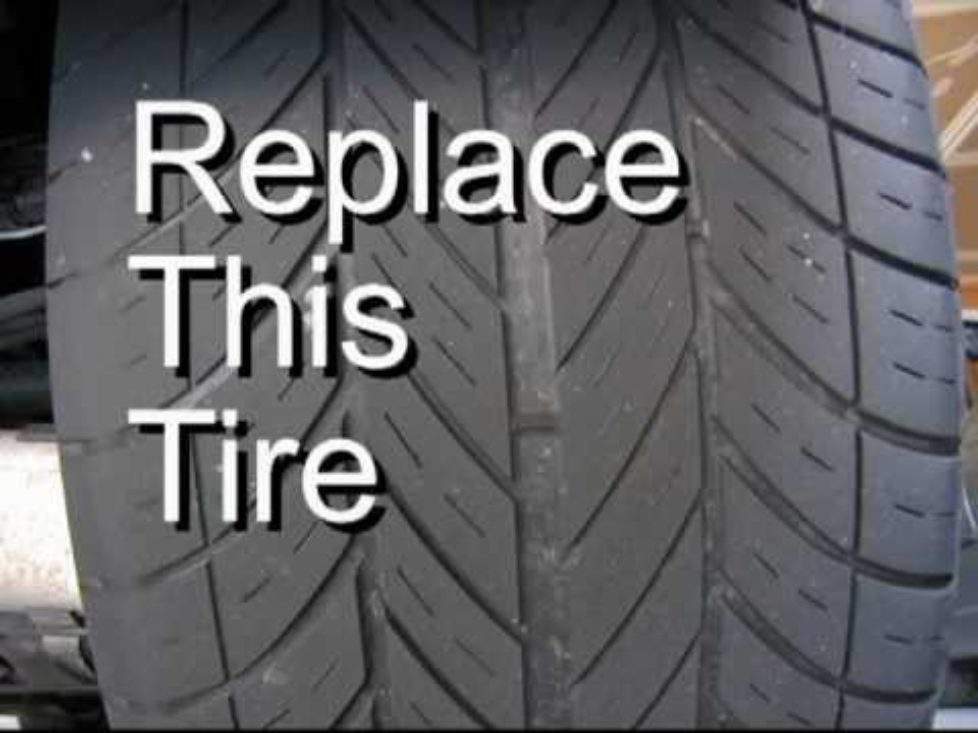 Paying for a new tire is a much better option than putting yourself, your passengers and your vehicle at risk.
Paying for a new tire is a much better option than putting yourself, your passengers and your vehicle at risk.
Here are some other ways to practice proper tire maintenance:
Bring your vehicle in to your local Virginia Tire & Auto. One of our seasoned mechanics will diagnose the issue and get you back on the road quickly.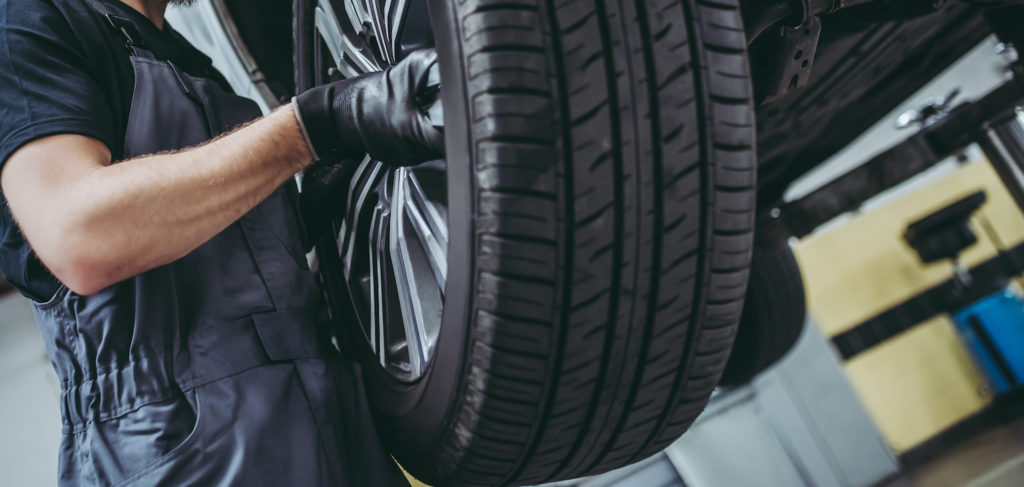 Schedule an appointment at any of our convenient locations today!
Schedule an appointment at any of our convenient locations today!
Car wheels are like shoes for a person: it is not only a functional detail, but also the "second face" of the owner. Dirty and unkempt shoes immediately catches the eye, causing rejection; and yes, it won't last long. Let's talk about how to properly take care of the "shoes" of the car - tires and wheels.
Let's define terminology. Wheel is a ready-to-install kit consisting of a rim and a tire fitted to it. Many tire and rim care procedures are identical - we will combine them when talking about wheels in general. And we will mention things specific to rubber and disks separately at the end of the article.
It would seem what nuances the operation of the wheels can have - “shod” and drove off. But it is misuse that leads to most problems with tires and wheels and their early death. Here's what you should pay attention to:
Driving with abnormal tire pressure is fraught with both the tires themselves and the rims.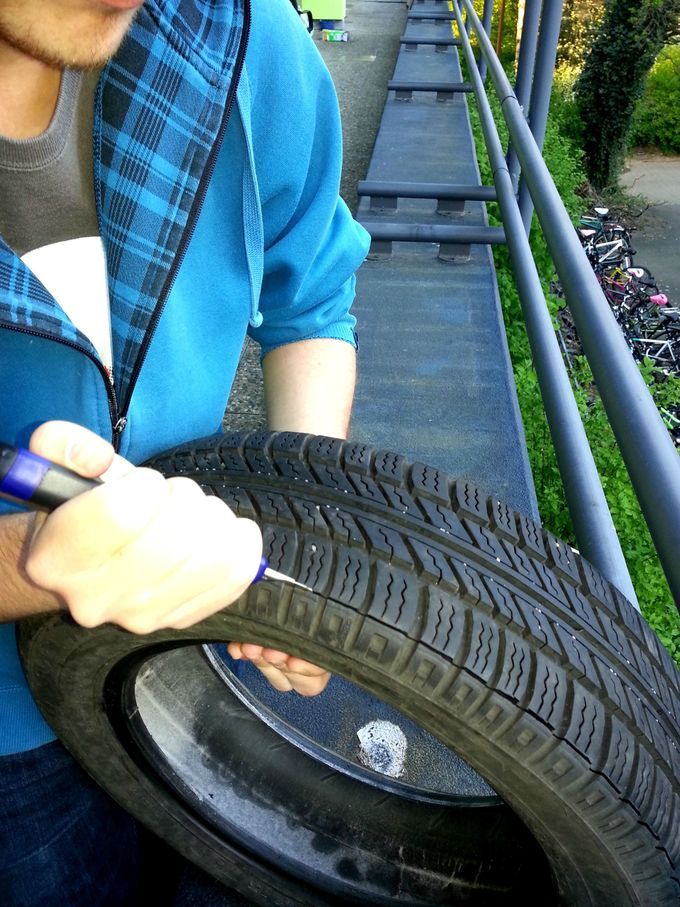 Excessive pressure accelerates the wear of the central part of the tire, and also threatens the appearance of hernias during shock loads in the pits. Too low pressure increases the wear of the shoulder areas of the tread, is fraught with mechanical damage (breakdown) of the tire or disassembly of the wheel on the go.
Excessive pressure accelerates the wear of the central part of the tire, and also threatens the appearance of hernias during shock loads in the pits. Too low pressure increases the wear of the shoulder areas of the tread, is fraught with mechanical damage (breakdown) of the tire or disassembly of the wheel on the go.
It is especially important to monitor the pressure in low-profile tires - here the disc is also at risk. If you get into a pit on poorly inflated wheels, there is every chance of tearing the tires and “squaring” or splitting the rims - repair and replacement of parts will cost a pretty penny.
Regularly check the pressure in the tires and, if necessary, inflate them yourself using a car compressor, without postponing this procedure, hoping to get to the tire shop. According to Murphy's law, it is on the way to it that a deep hole will be waiting for you.
Wheel alignment affects not only the geometry and suspension units, but also the wheels themselves.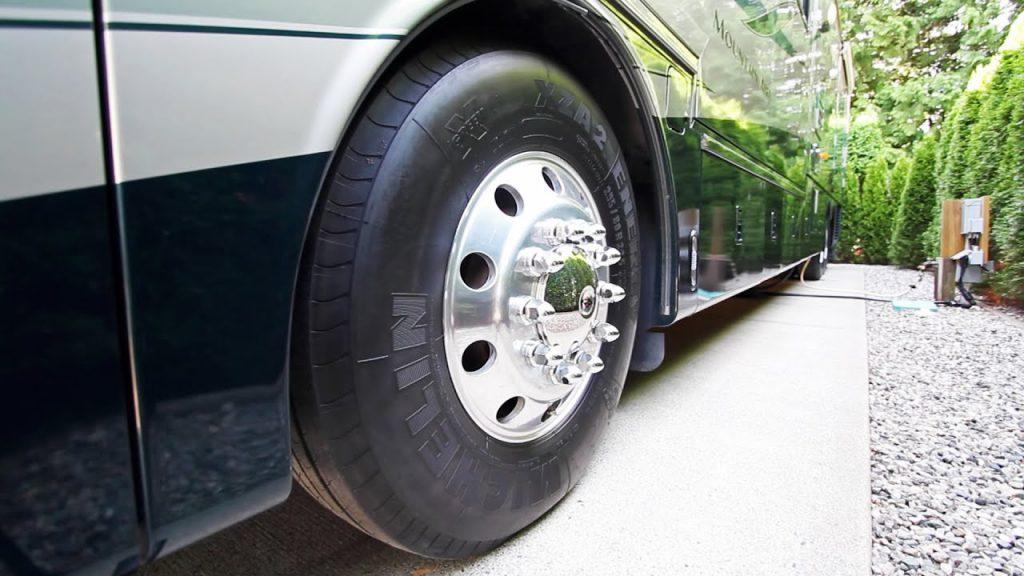 To a greater extent - on tires: if the camber or convergence is incorrect, the rubber begins to "eat". Increased and uneven tire wear reduces its service life by 2-3 times.
To a greater extent - on tires: if the camber or convergence is incorrect, the rubber begins to "eat". Increased and uneven tire wear reduces its service life by 2-3 times.
To prolong the life of your tires, regularly check the camber and toe on the stand: during seasonal “shoe changes”, after suspension repairs, and also after encounters with deep pits. The timely noticed and corrected deviation of the wheel alignment angles from the factory values will save you from early replacement of tires.
Seasonal tire change was invented for safety, but indirectly affects tire life. Summer tires "glaze" in the cold, and soft winter tires start to frankly "float" at positive temperatures, wearing out several times more intensively. Therefore, each type of tire should only be used in the appropriate temperature range. Just one season in "shoes" that doesn't suit the weather, and tires can go to a landfill.
Tire fitting (wheel assembly process) is a rather painful procedure for a tire: with each beading, the bead ring is stretched, which does not add durability to the tire. There is nothing to say about discs: scratches and chips on them are practically the norm for unskilled mechanics. Therefore, it is justified to have two full-fledged sets of wheels - when changing tires seasonally, you will not need to remove them from the rims.
There is nothing to say about discs: scratches and chips on them are practically the norm for unskilled mechanics. Therefore, it is justified to have two full-fledged sets of wheels - when changing tires seasonally, you will not need to remove them from the rims.
If tire fitting is unavoidable, choose trusted workshops with high-quality equipment and trained personnel. For example, in Giperavto car services, special emphasis is placed on tire fitting: before each season of “changing shoes”, mechanics undergo additional training, and all equipment is set up and calibrated.
Not all motorists know about tire rotation according to a special scheme, although this procedure is described in detail in the instructions for any car. The point is to swap the wheels so that they wear evenly. It is recommended to do this every 10,000 km. When buying a new set of five tires, the spare tire is also included in the rotation scheme - in this case, the rubber will last noticeably longer.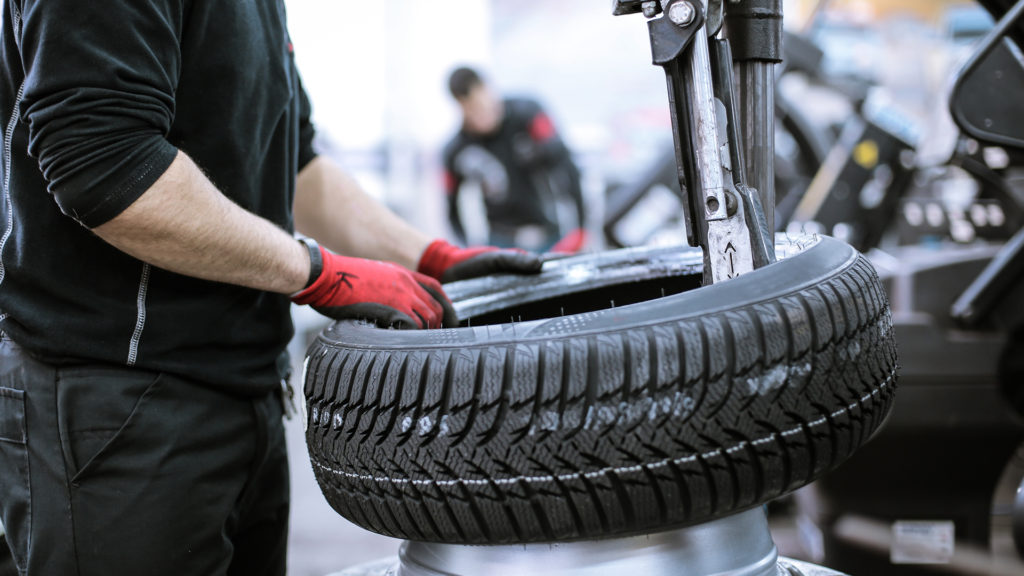 Incorporate wheel rotation into your machine's periodic maintenance plan to prolong tire life.
Incorporate wheel rotation into your machine's periodic maintenance plan to prolong tire life.
Seasonal tire change raises a reasonable question: where to store the second set for six months? It is better not to consider options with storing wheels on a balcony or in a vestibule of a staircase due to the specific and persistent smell of rubber - take pity on your health. The ideal solution is a "tire hotel", a seasonal tire storage service. And with self-storage, you need to know a few subtleties.
Wheels should be stored in a well-ventilated, dry place, protected from sunlight and rain. Covered parking lots usually meet these requirements, but garages do not always. Leaking roofs after rain are a common problem for garage cooperatives. And if you don’t want to find swollen paint and traces of rust on the disks after six months, take care of their protection from moisture. Too dry air is the other extreme: rubber in such conditions cracks and cracks.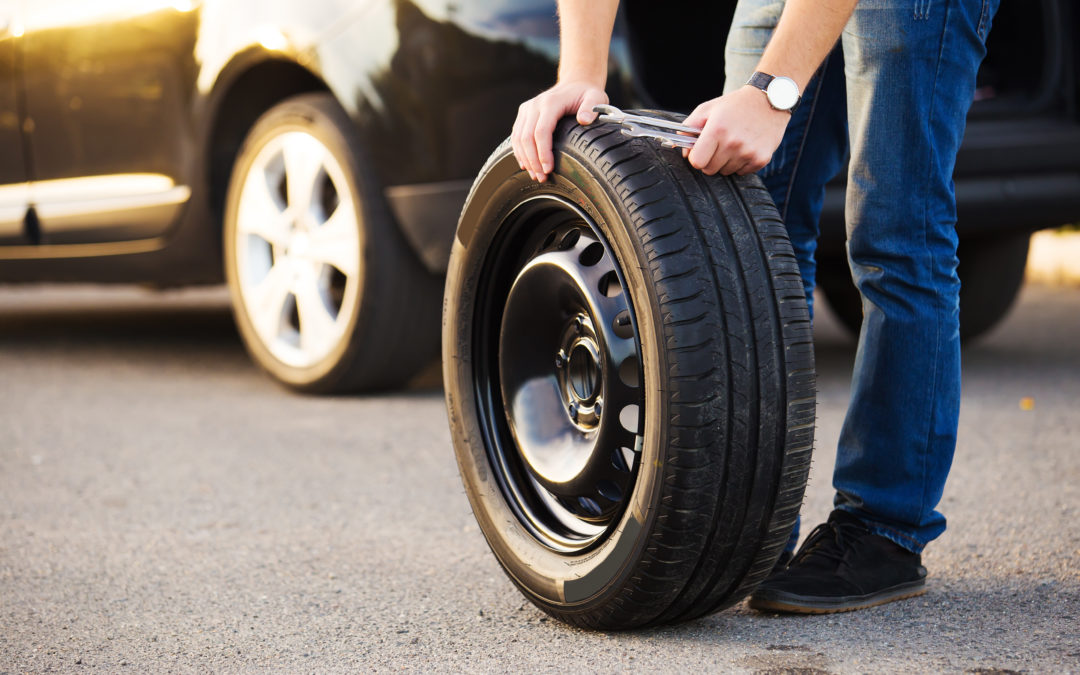 The optimum humidity for storing wheels is 55–65%, temperature is 20–25 °C.
The optimum humidity for storing wheels is 55–65%, temperature is 20–25 °C.
Please note that tires and assembled wheels are stored differently. Tires without rims are stored vertically - they are placed in a row, periodically turning over to change the fulcrum. Tires on disks are placed horizontally (in stacks of no more than 2 wheels) or suspended. Improper storage can lead to tire deformation and serious problems during further use.
Caring for your wheels starts with regular and thorough cleaning. When you go to the car wash, ask to clean the tires and rims with special care, especially in winter, when the roads are actively sprinkled with reagents. It is necessary to wash off the aggressive salt mixture from the wheels as soon as possible to avoid the appearance of oxides.
After an active foam that cleans the entire body, use additional tire cleaners designed specifically for rubber and wheel cleaners that remove tough dirt such as stubborn dust from brake pads.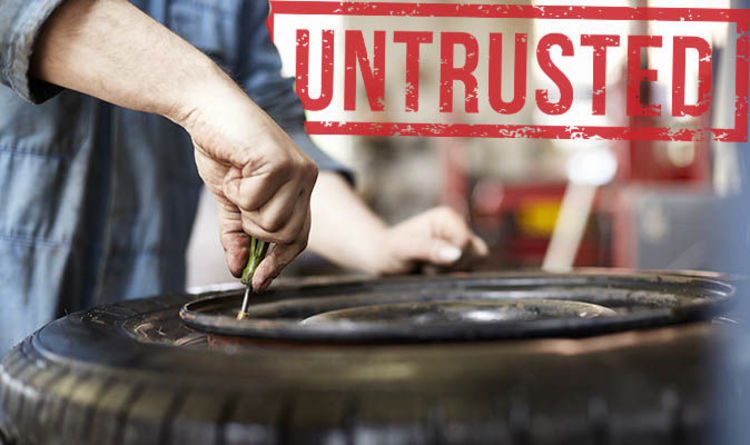
In addition to natural wear and tear during operation, the main enemy of tires is aging. Natural rubber, the basis of rubber, loses its elasticity under the influence of ultraviolet radiation, adverse climate, road chemicals and other factors. After 5 years from the date of release, the tire begins to dry out, no longer providing proper contact with the road.
To prolong the life of tires, use a special polish-black after each wash. They soften rubber and create a film on the surface that protects against ultraviolet radiation. They also return a deep black color to the rubber, pleasing to the eye.
Wheel rims are in direct contact with road chemicals and therefore require extra thorough cleaning to avoid corrosion and paint damage. Other than that, disc care comes down to the following:
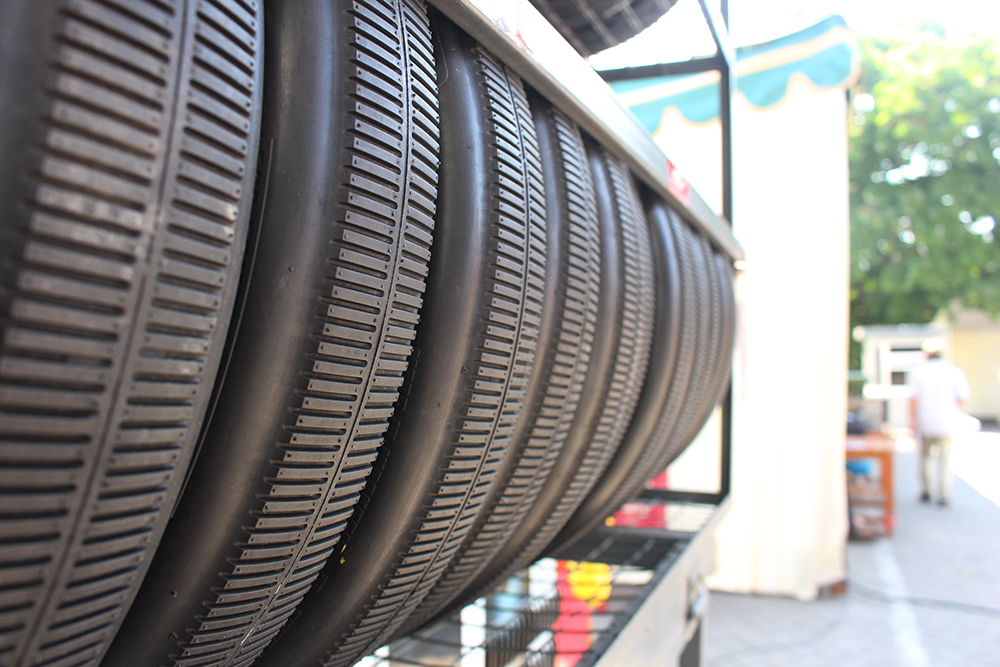
Take care of your car wheels like your own shoes and they will serve you for a long time without losing their visual appeal.
11/08/2012 #Tire # Tire
Storage and care of tires With the onset of winter, all motorists change tires.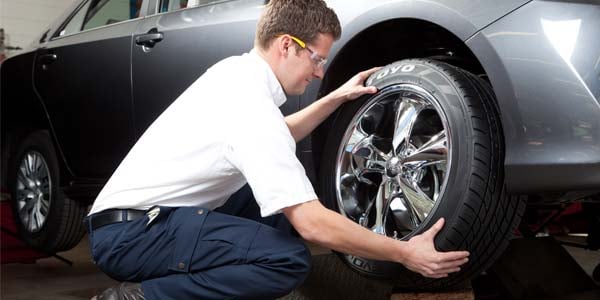 But not everyone knows how to properly store and care for the “shoes” of their car. In this article, we would like to talk in detail about how to care for tires and how to store them in winter and summer.
But not everyone knows how to properly store and care for the “shoes” of their car. In this article, we would like to talk in detail about how to care for tires and how to store them in winter and summer.
So, in order to prolong the life of car tires, you should follow the following recommendations of experienced motorists.
1. Before you start your journey, you should carefully inspect the wheels. In particular, you should take the time to inspect the tire tread. Scratches, punctures and other defects are unacceptable on the rubber of the car. Do not forget to check the residual tread depth, which affects driving safety.
Reference
The world's largest auto parts manufacturer, Continental, believes that tires are unacceptable if the tire's minimum tread depth is 1.6mm, which is the most acceptable standard. This standard is adopted in the Russian Federation, as well as in many European countries.
In winter, you need to carefully monitor how the studs behave on the tire, whether they provide good grip on melted ice and snow. If the studs are loose and you can swing them with your hand, such rubber can let you down in ice, its grip properties do not meet the standards.
2. In order not to deform the spikes, they should be regularly cleaned of dust, dirt and debris. When washing, do not use a particularly strong jet and special cleaning agents. For a good cleaning of the tread, ordinary soapy water is enough.
3. If you want to not only keep tires in good condition, but also extend their service life, then you need to rotate tires in a timely manner. On different axles of the car, they wear out in different ways. This simple procedure for changing tires in places can significantly increase the mileage of automobile rubber.
4. After buying a new tire, do not immediately try to test it. Just by running in new tires, you will significantly reduce their wear.
5. Keeping track of whether the tires are used correctly is quite simple. It is the uniform wear of rubber that indicates that you are taking care of your car tires in a timely and correct manner.
6. We can take care of your tire storage! We do washing and treatment with a composition-preserving agent for free!
Read more about tire storage at Auto-Alliance on our website. But if you decide to store the tires yourself, then you should know that the rubber is stored in a dry, well-ventilated place, without direct sunlight. Try to maintain the right temperature in the room where the rubber is stored - this will help keep the tires in good condition, since the rubber reacts sharply to both heat and cold during storage.
7. Regardless of the place where the rubber is stored, be it a garage or a part of the corridor in front of the apartment, in no case should car tires be wrapped in plastic wrap or stored in bags. Such storage of rubber after a short period causes the appearance of condensed moisture, which is far from the best effect on the condition of the rubber.
8. Tires without rims and complete wheels are stored completely differently. Many car enthusiasts do not take this into account, as a result they get an imbalance by the season or (worse!) The tire may lose its shape!
To avoid this, tires with rims and tires without rims must be stored in different conditions. So, tires as an assembly are stored in a suspended form or in a horizontal position. It is also allowed to store tires with a disk one on one, but follow the measure so that the order is observed - no more than two wheels in a stack.
Tires without rims are stored vertically! If the tires are sent for long-term storage, then do not forget to rotate the tires every two to three months, changing the area of support, in order to eliminate shape change and an increase in imbalance.
Even if you use your car a little, and, accordingly, the rubber wears out little, the maximum service life of car tires should not exceed five years.
Read in our reviews about the "History of car tires" and their labeling.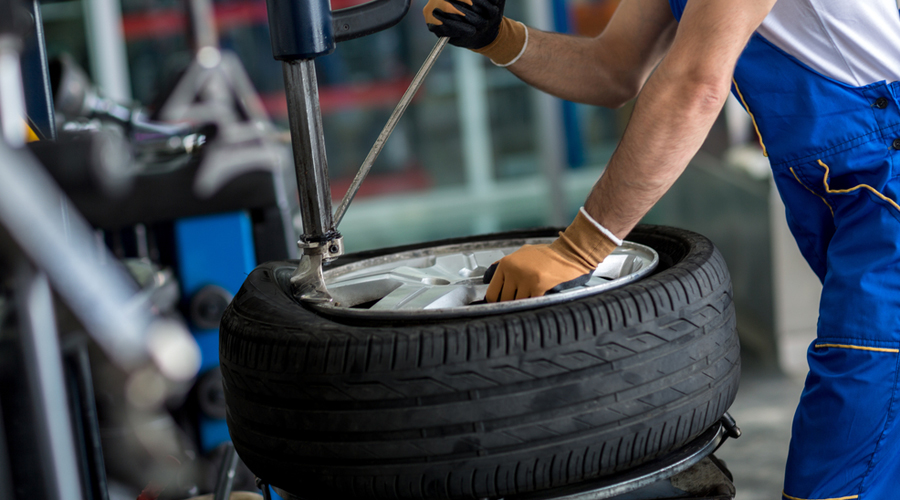 06/22/2022 | Spare Parts Articles
06/22/2022 | Spare Parts Articles
The chassis of many Japanese Nissan vehicles is equipped with a split type anti-roll bar connected to the suspension parts by two separate struts (rods). All about Nissan stabilizer struts, their types and design, as well as selection and repair - read in this article.
#Drive V-belt
Drive V-belt: reliable drive of aggregates and equipment
06/15/2022 | Articles about spare parts
Gears based on rubber V-belts are widely used to drive engine units and in transmissions of various equipment. All about drive V-belts, their existing types, design features and characteristics, as well as the correct choice and replacement of belts - read the article.
Brake drum GAS: controllability and safety of Gorky cars
06/08/2022 | Articles about spare parts
The brake systems of most early and current models of GAZ vehicles are equipped with drum-type wheel mechanisms.